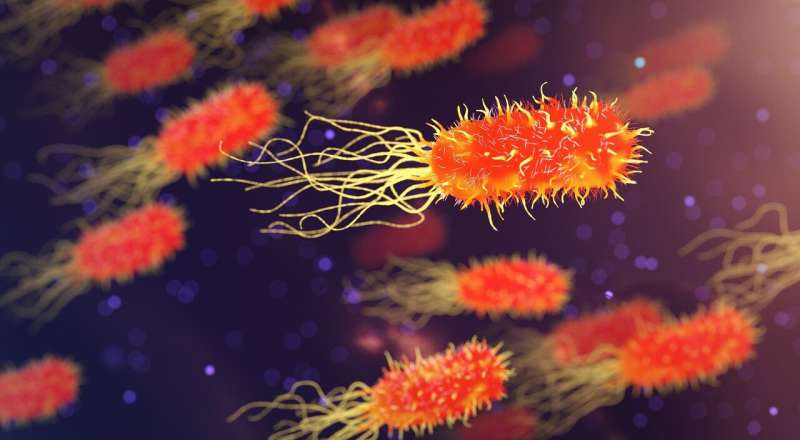Examining the odd locomotion of microswimmers

Being odd can be a good thing, particularly when you are a microscopic cellular organism trying to go places.
Swimming may be the first form of motility that emerged on Earth. The act of swimming for tiny animals, however, is not necessarily easy. Macroswimmers such as scallops even have a theorem named after them which prohibits reciprocal swimming in the microscale.
In other words, theory says that microscopic scallops shouldn't be able to swim at all. Here scallops are used as an analogy to help describe a single-hinged object.
KyotoU researchers have now discovered a new formula for swimming based on their study of odd elasticity, or non-reciprocating behavior by microswimmers. The scientists began their study by running computer models of swimmers.
"Our first model swam unexpectedly well and with beautiful self-generated strokes," explains author Clément Moreau.
Microrobots are making headlines for their potential to safely deliver drugs or perform non-intrusive surgery. But while these move according to pre-programmed instructions, Moreau and his team's microswimmers are autonomous. Their underlying technology is based on odd elasticity, which exhibits self-oscillations of active materials.
KyotoU scientists from varied backgrounds together envisioned a simple model of self-propelled materials. Using computer simulations combining fluid dynamics, mathematics, and statistical physics, microswimming behavior was observed to demonstrate autonomously directional and deterministic motion by an odd-elastic filament.
The team used Purcell's swimmer model—considered a minimal model of microswimming with two degrees of freedom—to study efficiency, stability, control, and other aspects of biological swimmers and artificial robots. This three-link model consists of three slender rods of specific lengths connected by two hinges.
Further, the researchers found a new mathematical swimming formula, demonstrating that any odd elastic micromaterial can spontaneously generate locomotion in a fluid, creating directional motion from random fluctuations.
The team's next goal is to quantitatively estimate the value of odd elasticity of actual active materials including biological cells, chemically active enzymes, and synthetic microrobots.
"We believe that our research on odd elasticity is helping to bridge classical descriptions of automated microswimmers with our new autonomous-motion model," concludes Moreau.
The research was published in Physical Review E.
More information: Kenta Ishimoto et al, Self-organized swimming with odd elasticity, Physical Review E (2022). DOI: 10.1103/PhysRevE.105.064603
Provided by Kyoto University





















